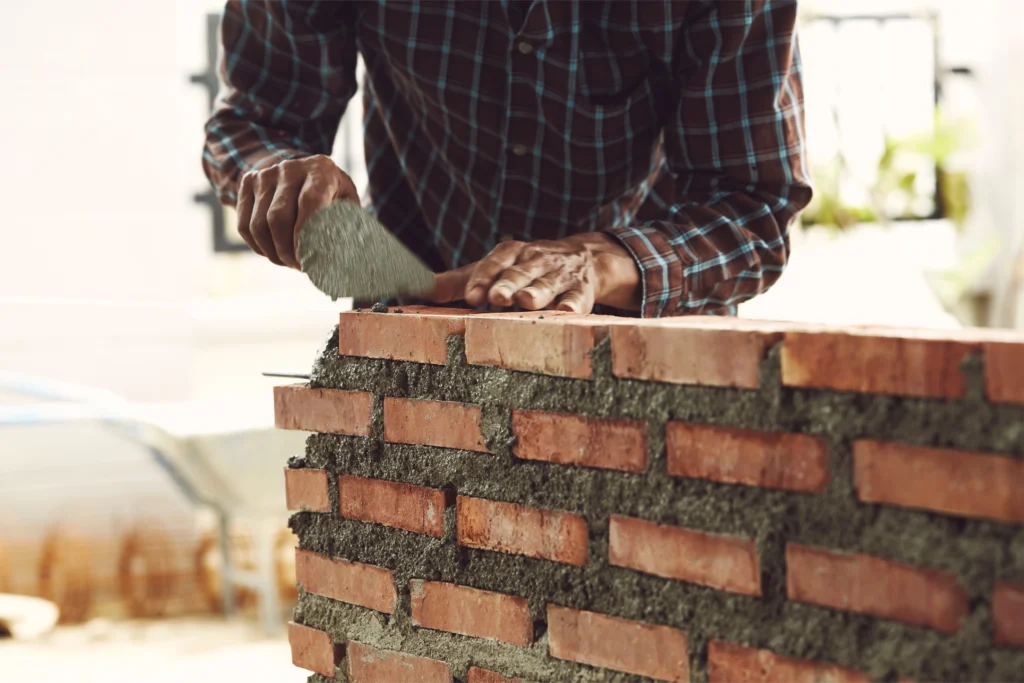Masonry is a form of construction that relies on naturally occurring and some man-made hard materials including but not limited to marble, stone, and brick amongst many others. This type of building encompasses laying the units on top of each other while using cement, clay, or mud mortar to increase the tensile strength of the unit.
It is the most long-lasting type of construction since such materials are resistant to elements and take so long to wear off. Knowing the different types used for construction is key to choosing the best one for your house. This article takes a closer look at the different types to consider.
Gabion Wall
With this type, small stones, rubble or marbles are put in a basket, usually rectangular, made of wire mesh. The mesh is then tightened to ensure cohesion amongst the stones inside it.

Masonry Installation
Upon filling with stones, the mesh is then closed on top to make a wall that is usually used to retain water and soil on sloppy areas that experience massive erosion. Instead of verticals, gabions are built in a sloping gradient to make it withstand pressure from the flowing water and soil.
Brick Units
Brick is among the oldest materials. These units are made by filling a formwork with clay. They are then hardened by heating at very high temperatures, usually a kiln. When building a brick wall, the blocks are laid on top of each other while cement mortar is used to increase the strength of the wall. When complete, brick brings in some sense of class and elegance, which explains why it is the most popular type for constructing homes.
Stone Units
Stone is the oldest form of building, due to its durability and its ability to withstand the forces of elements. When well done, a stone constructed structure can guarantee you between 300 and 1000 years of service. Stone construction is done by laying the blocks on top of each other while cement mortar is used to plaster it. Stone comes in various forms including coursed and un-coursed rubble and ashlar. For high-rise structures, stone is not very desirable because it is a little heavier compared to most materials.
Composite
This style of construction entails mixing more than one type of material to increase the aesthetic appeal of a structure. For instance, you can mix marble and natural stone when building a house and you will be amazed at how beautiful it will look. Composite construction is the way to go if you are under a tight budget since it utilizes locally available resources.
Veneer Panels
Veneer is a style of construction that involves building a structure using a given material and then using a different type to cover the previous one. For instance, you can build a wooden house and then finish it using marble or stone. It is the type of building that is relied on for most renovation jobs. On the exterior walls of houses, it is mainly used to prevent water damage and extend the lifespan of the wood underneath it. In recent trends, a veneer is used to finish interior walls to make a house fire resistant and increase its aesthetic appeal.
Concrete Units
Concrete units are made by mixing sand, gravel, and cement in specified ratios. The concrete is then poured in a formwork, pressed to increase its strength and left to dry. Once dry, the precast formwork is removed and the block is given some light finishing. Concrete comes in both block and hollow forms. It is the most favored when building high-rise structures since it is lighter than stone and is strong. Concrete units are bound together by plastering them with cement mortar.
Dry Stack
The dry form of masonry encompasses the use of materials such as brick and concrete units without mortar, hence the term dry. Also known as interlocking blocks, hollow concrete and bricks are cut in precise sizes and shapes to allow them to interlock with each other. However, this style of building is only suitable for low structures and fences since interlocking unit walls lack enough tensile strength.
When choosing the right style of construction for your house, you must put into consideration factors such as size of budget, urgency to move in to your new house, availability of the material, resistance of the material to elements as well as your unique tastes and preferences. Now that you know the different styles of building put into consideration, choosing the right one for you will be easier.
